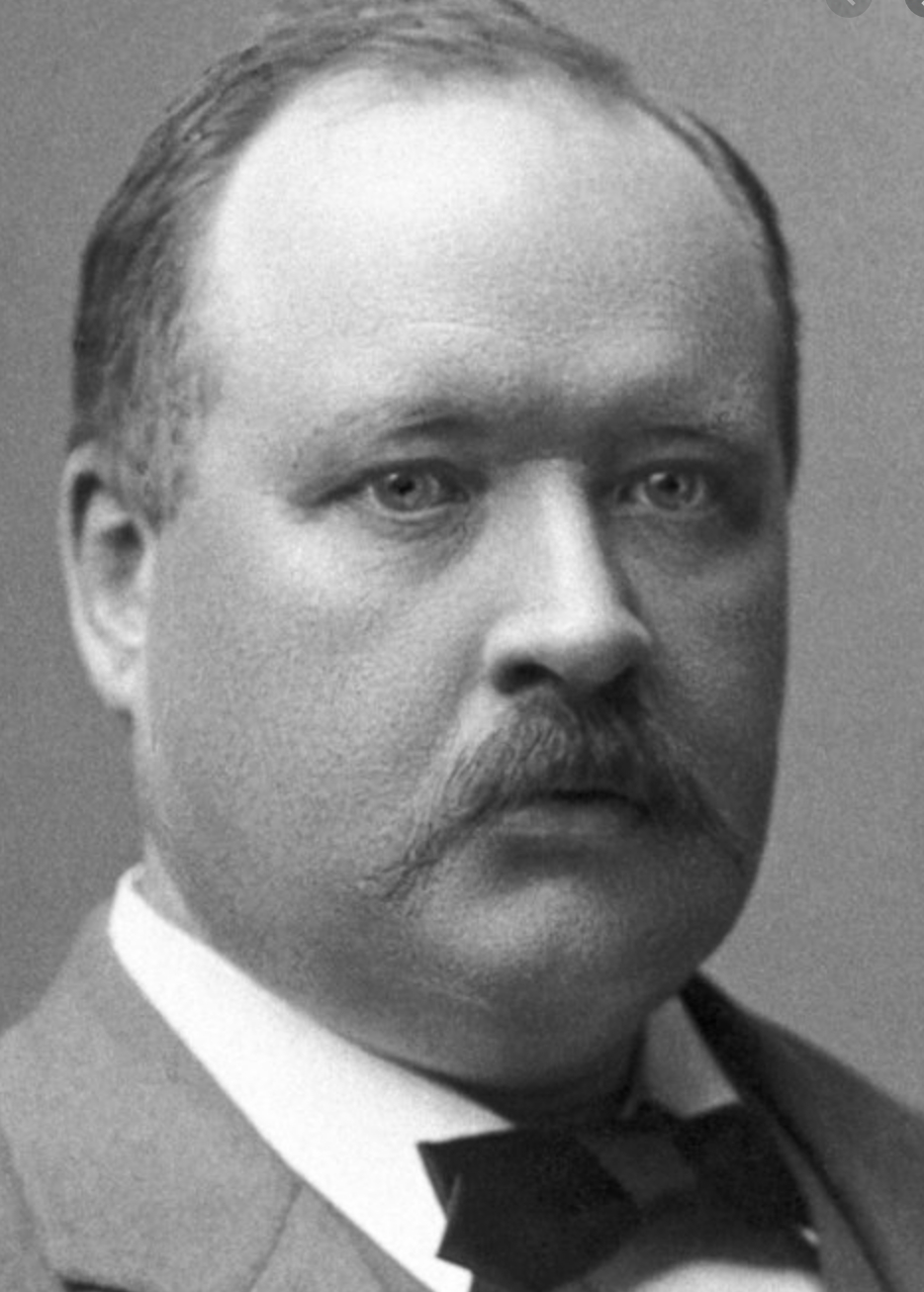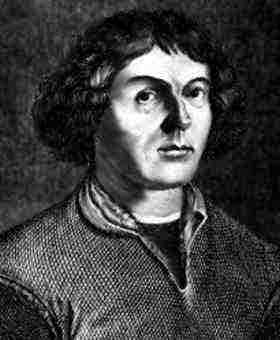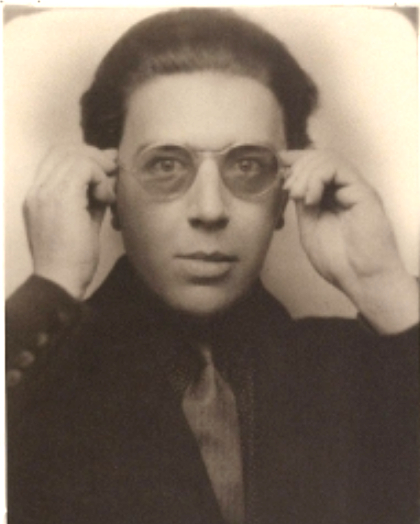February 19
Svante August Arrhenius

On this date in 1859, physical chemist and Nobel Prize winner Svante August Arrhenius was born in Sweden. He studied at Upsala University, then under a professor in Stockholm. His 1884 thesis, on the galvanic conductivity of electrolyes, won him the first docentship at Uppsala in physical chemistry, a new branch of science. Arrhenius was also awarded a traveling fellowship and worked with scientists throughout Europe.
He was appointed a physics lecturer in 1891 at Stockholm University College. Arrhenius in 1896 was the first to identify the relationship between the amount of carbon dioxide in the atmosphere and global temperatures, with a rise in the percentage of carbon dioxide tied to a rise in temperature. His work played an important role in the emergence of modern climate science.
He won the Nobel Prize for chemical research in 1903 for originating the theory of electrolytic dissociation, or ionization. He also investigated osmosis, toxins and antitoxins. He was offered the position of chief of the Nobel Institute for Physical Chemistry, founded just for him.
Arrhenius wrote classic textbooks in his field, which were translated into many languages, and popularized science for the general public with such books as The Destinies of the Stars (1919). His wide interests in science were exemplified by his contributions to the understanding of such phenomena as the Northern Lights. In 1914 he was awarded the Faraday Medal of the Chemical Society.
During World War I he worked to get the release of many German and Austrian scientists who had been made prisoners of war. According to freethought historian Joseph McCabe, Arrhenius was a monist. However, Gordon Stein in The Encyclopedia of Unbelief (1988) said he was “a declared atheist.”
He was married twice, first to his former pupil Sofia Rudbeck (1894-96), with whom he had a son, Olof, and then to Maria Johansson (1905-27), with whom he had two daughters and a son. (D. 1927)
Nicolaus Copernicus

On this date in 1473, astronomer Nicolaus Copernicus (né Nicolaus Koppernigk) was born the youngest of four children in Torun, Poland. He studied a wide range of subjects, including philosophy, Latin, Greek, mathematics, law, medicine and astronomy, at the universities of Krakow, Bologna, Padua and Ferrara. His uncle, a bishop, strongly encouraged him to pursue a career in the church since it would provide economic security, so he pursued a doctorate in canon law.
His uncle helped secure him the position of canon at Frauenburg Cathedral in 1497, which provided a comfortable income and did not require much work. This allowed Copernicus the freedom to pursue interests such as economics, medicine, law, diplomacy, art and astronomy. A bishop later threatened to take away his income unless he entered the priesthood but he continued to refuse. His opinion was so valued that the Fifth Lateran Council sought his views on calendar reform in 1514.
Around this time, Copernicus began circulating his Little Commentary, criticizing the Ptolemaic system that placed Earth at the center of the universe. Copernicus made astronomical observations without the aid of a telescope, which was not invented until 1609.
His most significant contribution to astronomy and science was “De Revolutionibus Orbium Coelestium” (On the Revolutions of the Celestial Spheres). In it he postulated that Earth and the other planets revolve around the sun, in opposition to the church’s universe, in which the sun and other planets revolve around Earth. He completed the book in 1530 and did not allow for its publication until 1541, at the urging of one of his admirers. Without Copernicus’ permission, a preface was anonymously added right before publication, classifying the work as mere hypothetical speculation.
Copernicus supposedly received the published book just before his death. Even though Copernicus dedicated his book to Pope Paul III, who had a fondness for astronomy, in 1616 the book was placed on the Index of Prohibited Books (publications deemed immoral and impious by the Catholic Church). In part, Galileo was condemned to house arrest and Giordano Bruno was executed for the heretical “Copernican” view that Earth was not the center of the universe.
“The Copernican theory contains many absurd or erroneous assertions,” wrote Christoph Clavius, a 16th-century Jesuit priest. It wasn’t just Catholics who were upset. “The fool will upset the whole science of astronomy,” complained Martin Luther.
Toward the end of 1542, Copernicus, who never married, was seized with apoplexy and paralysis and died not much later at age 70. (D. 1543)
“Perhaps there will be babblers who claim to be judges of astronomy although completely ignorant of the subject and, badly distorting some passage of Scripture to their purpose, will dare to find fault with my undertaking and censure it. I disregard them even to the extent of despising their criticism as unfounded.”
— Copernicus in his original preface to "De Revolutionibus" (1543)
André Breton

On this date in 1896, French poet and writer André Breton was born in Tinchebray, France. He wrote poetry early in life but formally studied medicine and later psychiatry. He met Sigmund Freud in 1921 and his later writings were inspired in part by Freud’s ideas. Breton is considered, along with Salvador Dalí and others, a founder of surrealism. His Surrealist Manifesto was published in 1924, and that same year he influenced the founding of the Bureau of Surrealist Research.
The French government in 1938 sent Breton on a cultural commission to Mexico, where he met Leon Trotsky, Diego Rivera and Frida Kahlo. Breton and Trotsky wrote a manifesto calling for freedom in art, “Pour un art révolutionnaire indépendent” (“Manifesto for an Independent Revolutionary Art”). Breton joined the French Army medical corps during World War II, at which time the Vichy government banned his writings. He escaped to the United States in 1941. Upon his return to Paris in 1946, he became a strong proponent of anarchism and founded a new group of surrealists.
Breton was extensively published. Some of his works include If You Please (1920), The Magnetic Fields (1920), A Corpse (1924), Nadja (1928), The Second Manifesto of Surrealism (1920), The Automatic Message (1933), What Is Surrealism (1934), Manifestoes of Surrealism (1955) and The Magic Art (1957). In André Breton: Arbiter of Surrealism (1967), Clifford Browder noted: “Breton was unflinching in his rejection of mysticism, which he associated with the worship of a superior power outside the human mind; for him the Surrealist merveilleux contained no trace of religious mystery.”
Breton was married three times. He met his third wife while in exile in the U.S. He had one daughter, Aube, with his second wife. Breton died in 1966 at age 70 and is buried in Paris.
“Everything that is doddering, squint-eyed, vile, polluted and grotesque is summoned up for me in that one word: God!”
— Breton, "Surrealism and Painting" (1928)
Beth Ditto

On this date in 1981, singer/songwriter Beth Ditto (née Mary Beth Patterson) was born in Arkansas to Velmyra Estel, a single mother who was in high school. Ditto did not know her father and later took the name of a man who helped raise her, Homer Ditto, who died at age 57. “My dad loved to show me off at honky tonks at the VFW where he would do sound,” Ditto posted on Instagram with his photo. (June 16, 2019)
The fourth of seven siblings, she had several stepfathers and grew up in Judsonia, where “her mother was overwhelmed by the demands of men, motherhood and rural poverty. Ditto was shuttled between the homes of Velmyra and [at age 13] her foul-mouthed aunt Jannie.” (The Advocate, Nov. 17, 2015)
She had a strict religious upbringing. “I was overcome by the Holy Ghost one time, but in a Baptist way. I was six or seven, and I was saved. I just cried and cried. It was joy!” she later remembered. “You live in this shadow that you’re going to burn in hell until you’re saved. And I still worry about it a little. I don’t believe in heaven, but I do still fear hell.” (Irish Examiner, July 6, 2009)
In her memoir “Coal to Diamonds” (2012), she “speaks openly about multigenerational instances of sexual abuse experienced by the women in her family, including her own experiences, having been molested at the age of five and raped by an uncle throughout her adolescence.” (Biographical entry, “The Encyclopedia of Arkansas,” March 21, 2024)
She deemed Judsonia a “shit town” where MTV was banned at the behest of the local Christian college. “As far as having fun – you couldn’t buy alcohol, there’s no drinking, no music, no dancing. So what do you do? You either go to church, you get knocked up or you move away.” (The Telegraph, June 18, 2017)
She started to realize in high school that she was gay and tried to convince her boyfriend to get her pregnant to prove she wasn’t a lesbian. Soon enough, she was grateful he scotched the idea. She moved at 18 to Olympia, Wash., and worked selling hot dogs in a mall. She and guitarist Nathan Howdeshell and drummer Kathy Mendonça, all from Arkansas, formed the indie rock group The Gossip in 1999, later dropping “The” from the name.
Ditto on vocals and keyboards fronted the group with a voice compared to Etta James’ and Janis Joplin’s. After several albums and Mendonça leaving the group to become a midwife, Gossip broke through with their 2006 studio album “Standing in the Way of Control” that hit No. 1 on the UK indie chart.
The title track became the unofficial theme song of the British teen drama “Skins.” The Irish Times called Ditto’s performance on the album as “a compelling combination of Brenda Lee, Dolly Parton and Siouxsie Sioux.” The Independent called the song “a juddering gay rights anthem and said Ditto was the star. (June 18, 2017) “Not only did she have an original voice – sometimes singing with honeysuckle sweetness, other times with a wildcat howl – but she was charismatic, too.”
The band would make five studio albums and relocate to Portland, Ore., before splitting up in 2016. Ditto had married longtime girlfriend Kristin Ogata in Maui, Hawaii, in 2013 before divorcing in 2018. Gossip returned with a show in 2019 that expanded into a world tour. A second reunion was announced in November 2023, with their sixth album “Real Power” released in March 2024.
Ditto had become a plus-size fashion favorite, started a clothing line and appeared nude as early as 2007 on music and LGBTQ+ magazine covers. Feminist legend Germain Greer told The Guardian that Ditto’s intention was to force acceptance of her body type, 5 foot tall and 210 pounds, “to challenge the conventional imagery of women.” She had been diagnosed with sarcoidosis after moving to Washington but recovered from the rare immune-system disorder that killed comic Bernie Mac in 2008.
She once described in an interview how coming out as an atheist was harder for her family to reconcile than accepting that she was gay. “Southern life really was God-fearing. Granny Ditto was a strict Pentecostal, with hair down to her knees,” she said, adding that it helped her to realize that “every 2,000 years, there’s a religion that happens to rule, and Christianity is just today’s religion.” (The Sunday Times, Feb. 4, 2007)
PHOTO: Ditto at the 2011 launch in Los Angeles of the Belvedere Vodka and RED Special Edition Bottle to raise money for RED’s Global Fund, co-founded by Bono and Robert Sargent Shriver III to fight AIDS, tuberculosis and malaria in Africa. Shutterstock/Kathy Hutchins photo.
“I said in an interview not long ago that I didn’t believe in God, and people called my mother saying, ‘How do you feel about Beth being an atheist?’ ”
— The Sunday Times (Feb. 4, 2007)
